The mountain villages in the Sierra de los Filabres in Almeria province are rarely visited by tourists.
By Nick Nutter | Updated 5 Mar 2022 | Almería | Villages |
Login to add to YOUR Favourites or Read Later
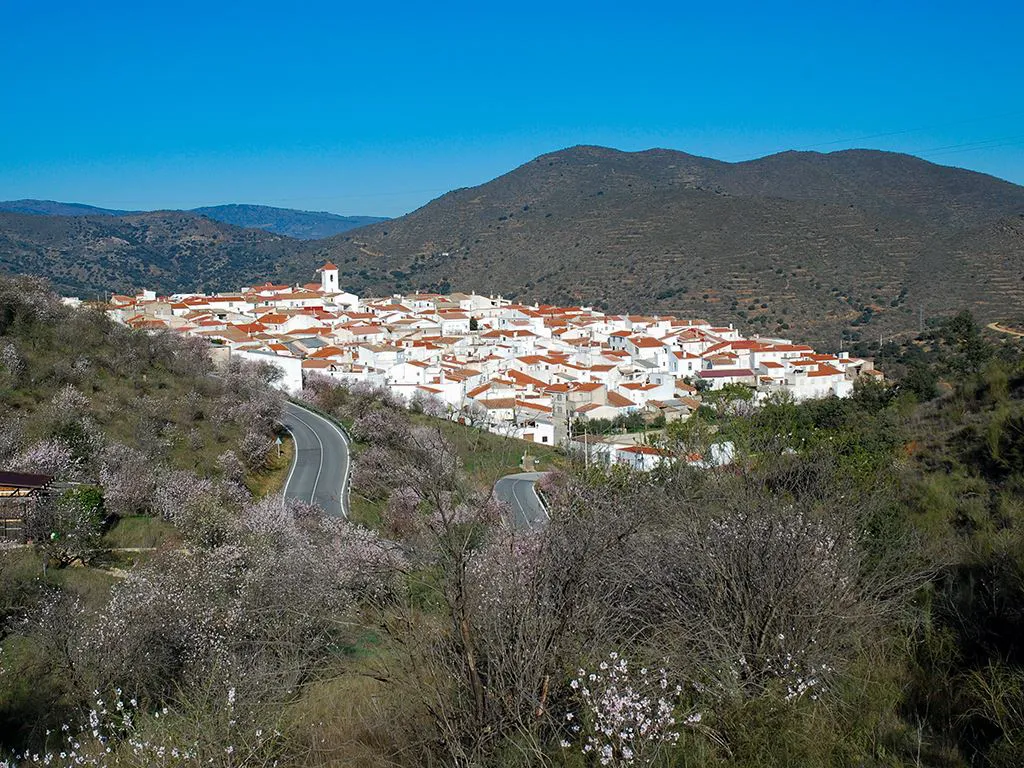
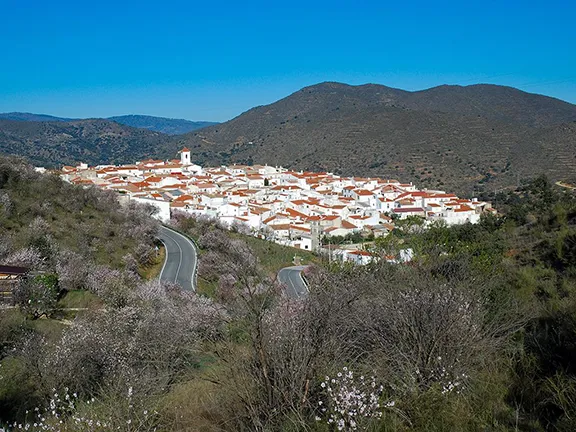
View towards Alcudia de Monteagud
The mountain villages in the Sierra de los Filabres in Almeria province are rarely visited by tourists. Tucked away in valleys, sheltered by ridges and mountains, these villages have a history that sets them apart from the larger towns and cities in the province. With names such as Benitagla, Benizalon and Benitorafe, their origins are easy enough to see, Ben is the Arabic word for ‘son of’. Individual Muslim families laid claim to the land by giving it to a favoured son. Others such as Tahal, have names that are not so easily deciphered. Nowadays, Tahal means ‘spleen’ and was probably then a family name. One of these mountain villages is Alcudia de Monteagud. Alcudia means ‘mountain’, and Monteagud is the 1,200 metre plus mountain on the sides of which Alcudia de Monteagud is nestled at just over 1000 metres above sea level.
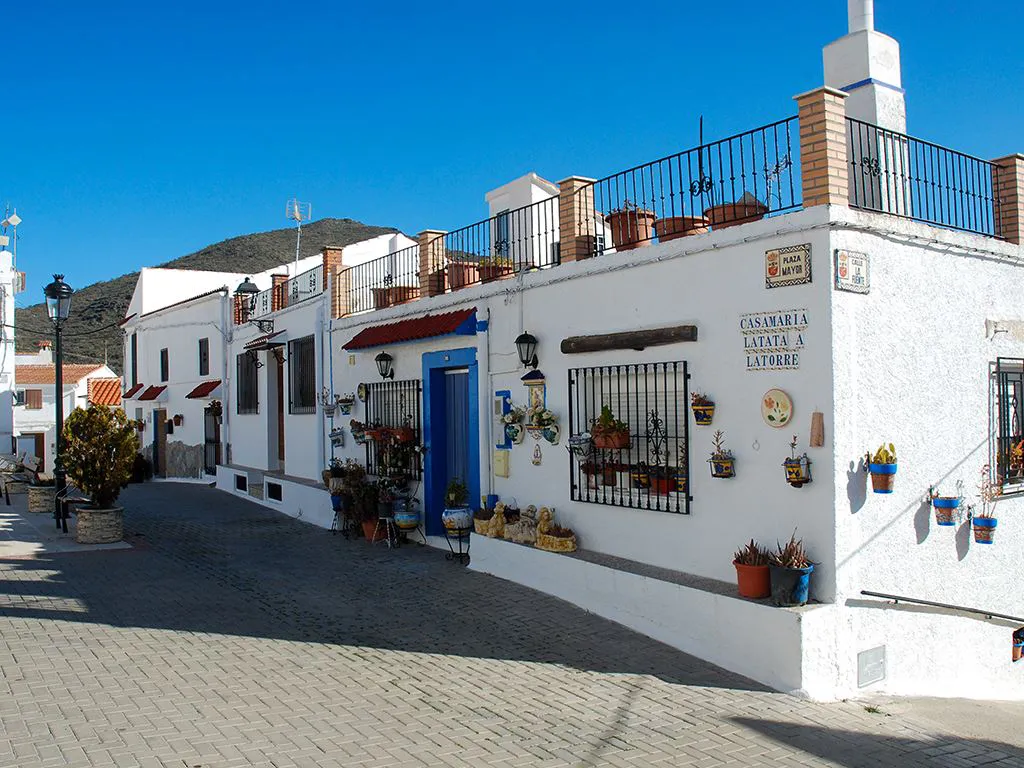
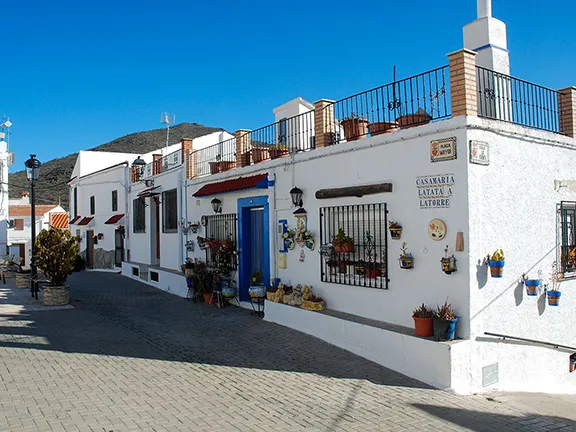
Alcudia de Monteagud
I have chosen Alcudia de Monteagud to epitomise the history of these remote villages because of one man; Doctor Juan Garcia who gained his doctorate in history at Granada University and who is passionate about the village in which his ancestors have lived for over 500 years. Juan is uniquely qualified to give us an insight into the history of his village, and, as I discovered later, the ecological history of Almeria as a whole.
On a warm, sunny day in February, Juan took the time out to meet me and introduce me to his village.
Although the impadronamiento shows a population of 160, the majority of those people live in larger towns and have inherited the properties in the village from parents. During February there are barely three dozen people living in the whitewashed houses, laid out with no thought for town planning in the typical Morisco fashion. As we tramped round streets too narrow for any motor vehicle, Juan cheerfully remarked that his wife, who is very familiar with the village, still gets lost in the labyrinth. Overhead, wires support grape vines that, during the summer, provide shade for these alleys.
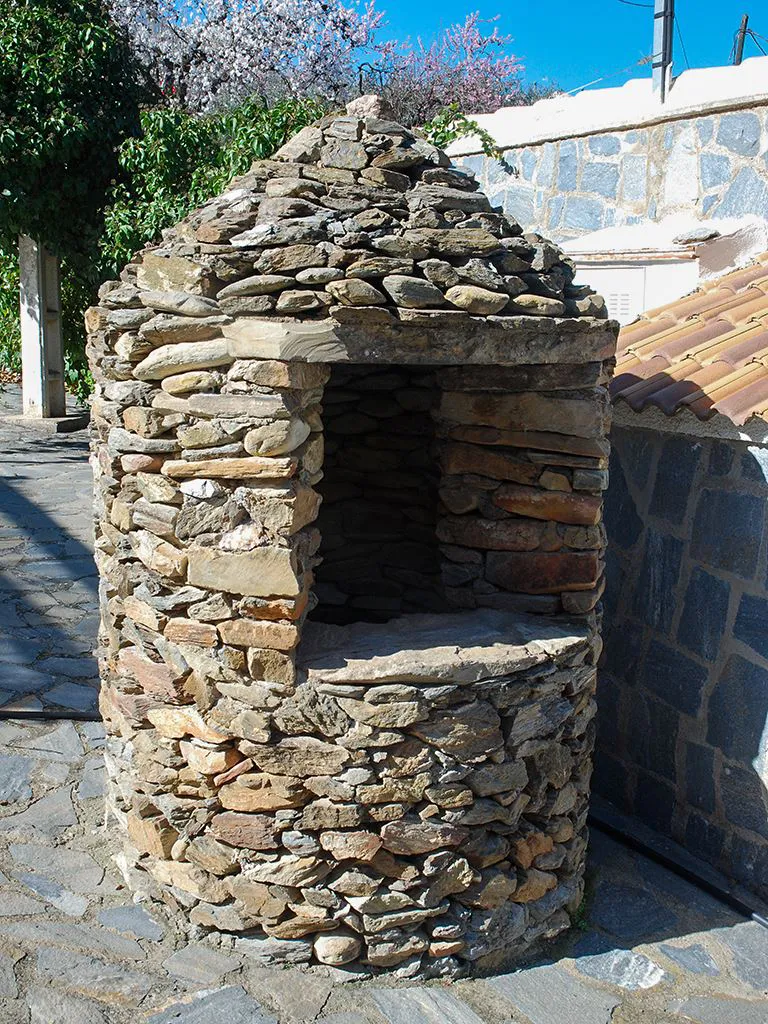
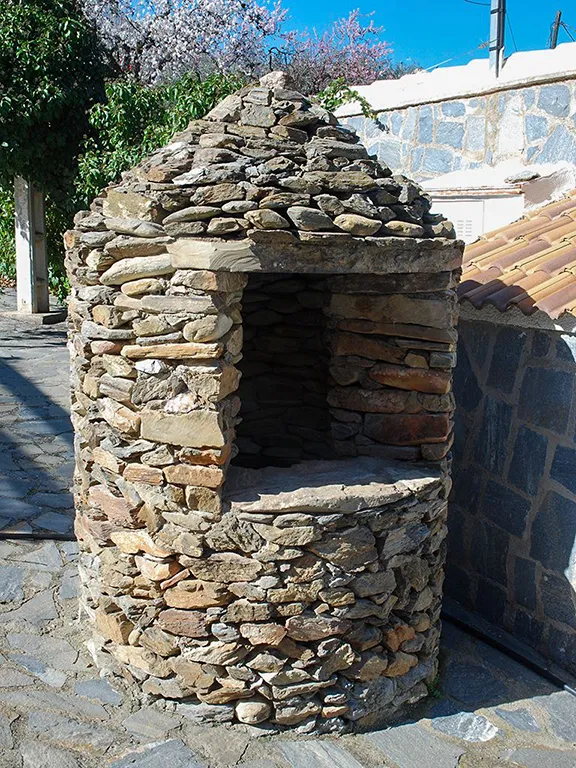
Bread oven Alcudia de Monteagud
Alcudia de Monteagud was founded around 1000 AD, about three hundred years into the Muslim occupation of al-Andalus. A growing demand for dried fruits, almonds and, crucially, the mulberry tree to nourish the silkworms that supplied what was then a burgeoning cottage industry, encouraged Muslim settlers to seek out the high valleys. In the Alcudia de Monteagud area, they planted olives, figs, almonds and mulberries. Much of the produce was exported from the port of Almeria, called ‘The Mirror of the Sea’ by the Moors. Even today the village is surrounded by almond trees, all in full bloom in February and the ubiquitous olive.
A mosque probably stood on the space now occupied by the small Ethnographical Museum. Behind this building is a barbeque area with a number of circular wells, now capped. The shafts penetrated 5 metres to galleries to collect the water that flowed through them. A communal laundry was situated between the two areas, together with the village bread oven. Juan explained that mosques were normally placed near water since part of the Muslim ritual is to wash before entering the mosque to pray. Unlike the much later Christian church that was built in the highest part of the village dominating the view and the populace.
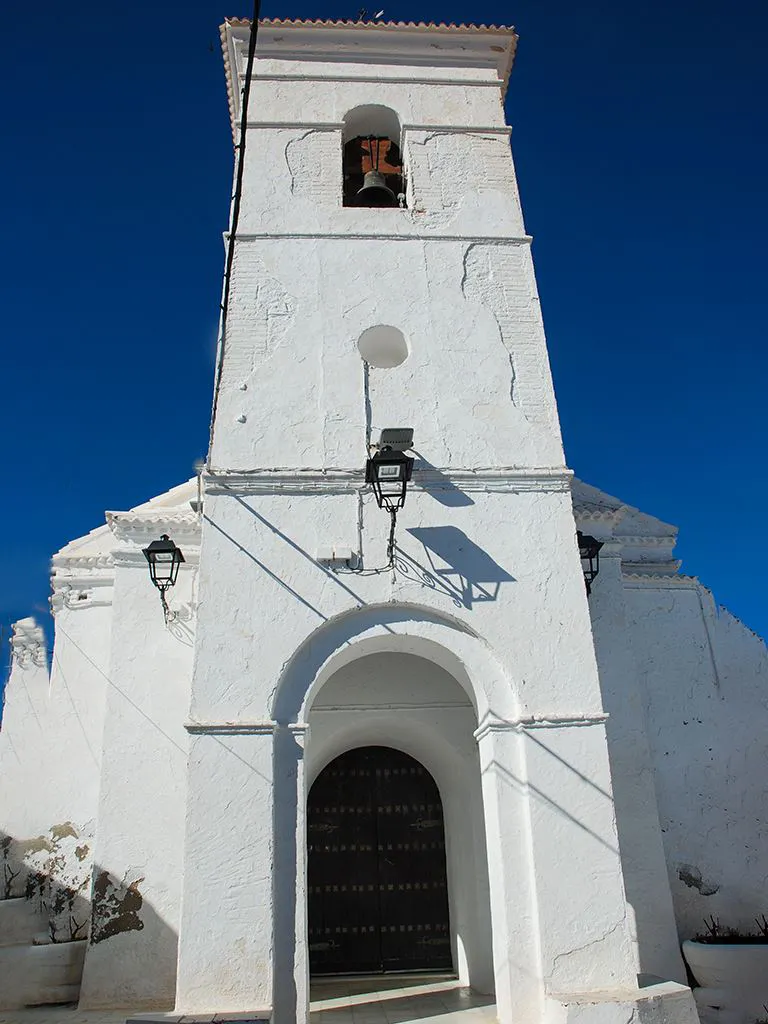
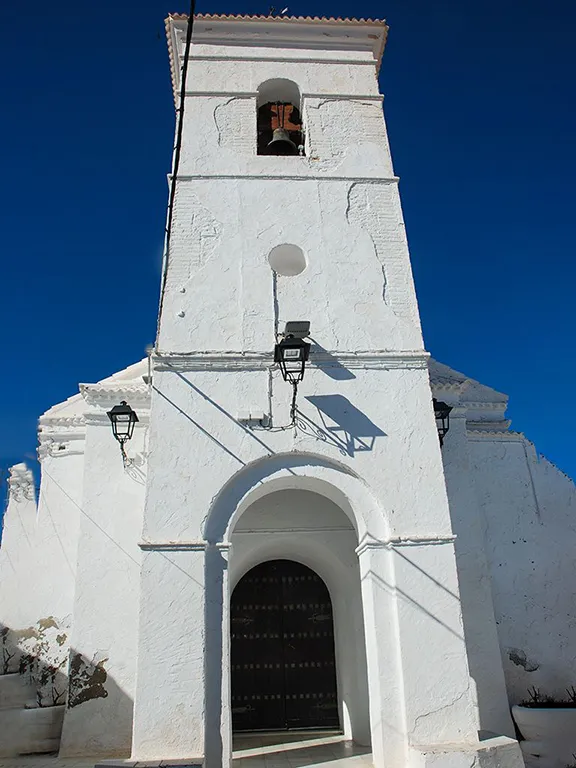
Iglesia Santa Maria del Rosario Alcudia de Monteagud
Life carried on peacefully until the reconquest. The population of Alcudia de Monteagud was predominantly Muslim, as was that of several nearby villages and, following the reconquest of the area in the late 1480s, the Muslims were obliged to convert to Christianity. They were known as Moriscos. To ensure the Moriscos kept to the ‘new faith’, the first church was built above the village. Naturally, most Moriscos, particularly in the more remote areas, away from the influence of larger towns and regulators, secretly kept their original faith.
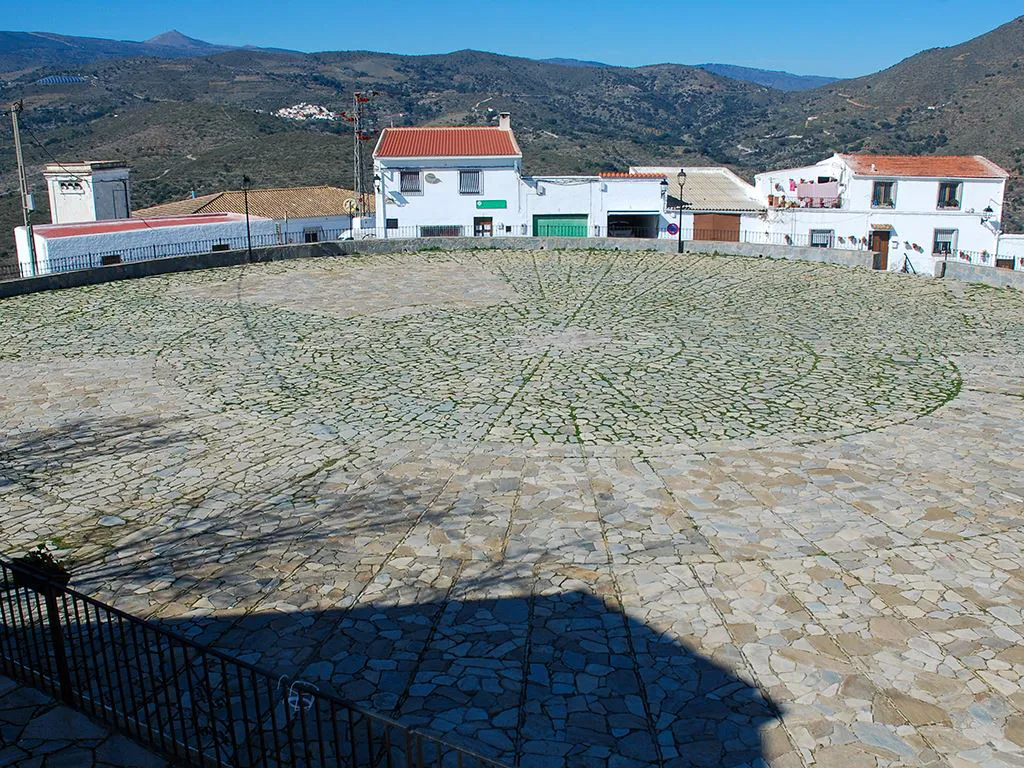
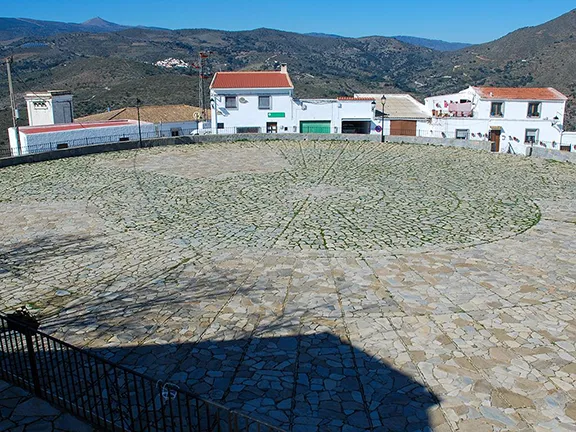
Threshing circle Alcudia de Monteagud
It is easy to imagine that the landscape we see today around Alcudia de Monteagud is the same as it would have been at the end of the 15th century. Nothing could be further from the truth. Despite similar weather, hot and dry during the summer and cold and dry during the winter, the sides of the mountains were cloaked in a thick forest of holme oaks and black pine. The drier, lower slopes above the cultivated land, was maquis. Over 90% of the landscape was uncultivated and home to a surprising array of animals including bears, roe and red deer, the gigantic aurochs, lynx, wild boar, wolves and a curious animal known by its Spanish name, the encebra. The encebra, now extinct, was a cross between a horse, a donkey and a zebra.
Sadly the large animals of the forest, including the auroch, bear and encebra were hunted to extinction and had mainly disappeared by the beginning of the 18th century.
Juan relates the story of how, when the Portuguese circumnavigated Africa at the end of the 15th century, they came across a black and white striped, horse like, animal. Already familiar with the encibra, they called these new animals by the same name, hence we now know this denizen of the African savannah as the zebra.
In 1494, Jeronimo Munzer, an Austrian doctor, travelled through the area and kept a journal of anything that sparked his interest. His accounts paint a vivid picture.
‘After a journey of nine leagues through a region of exuberant vegetation, but without water and depopulated, we reached Vera. In the mountains there are so many deer, bears, roe deer and wild boars that it seems incredible.’
And another entry,
‘On October 18, 1494, two hours before dawn, we mounted our horses and left Tabernas. After a couple of leagues, it was daylight in a smiling valley, watered by a stream, on the banks of which are lush orchards and green fields, where palm trees, olive trees, almond trees and fig trees grow. We had the illusion that we were walking in paradise.’
The ‘paradise’ described by Jeronimo was the irrigated ‘vega’ of the city of Almeria and the stream was the Andarax river.
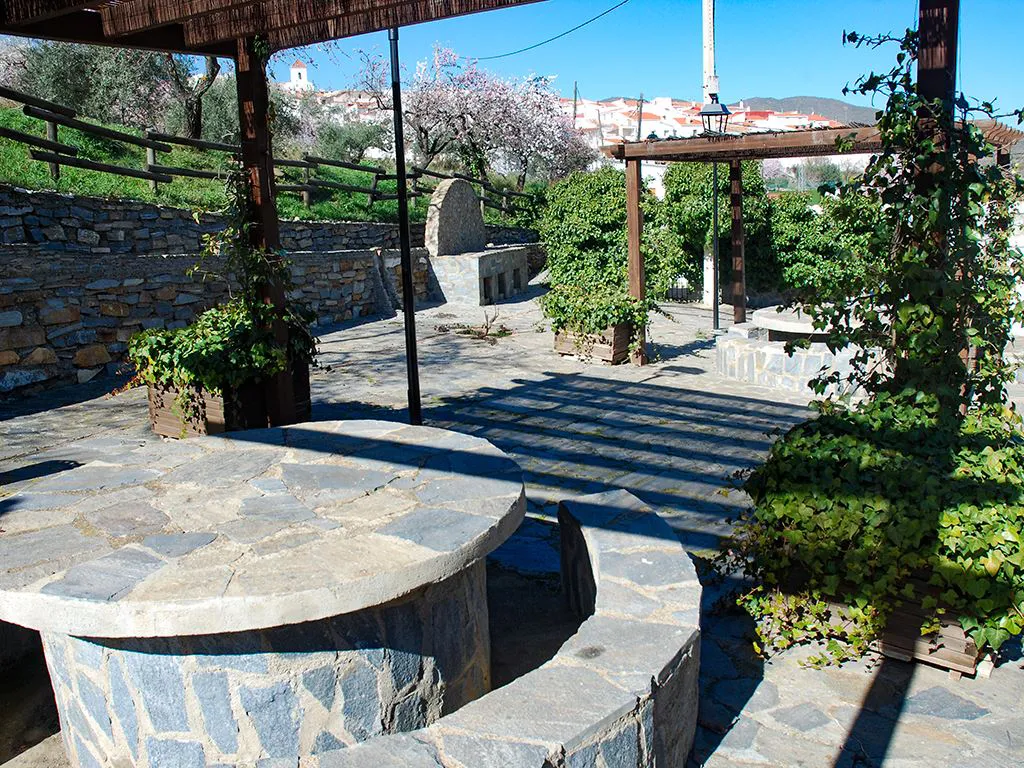
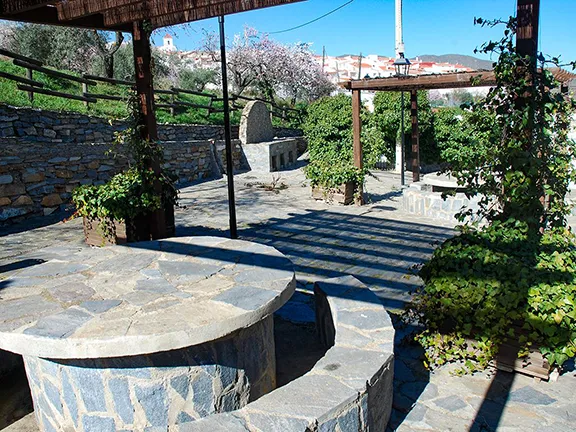
Well heads at Alcudia de Monteagud
Life in paradise was soon to be interrupted for the people of Alcudia de Monteagud. In 1561, the Inquisition arrived in Alcudia de Monteagud and the surrounding villages. Texts of the time reveal how harshly Moriscos were treated by the Inquisition. Ysabell Lixarris was a resident of Alcudia de Monteagud and was singled out for punishment. Her ordeal was recorded thus,
‘ Ysabel Lixarris, Moorish, because she washed her entire body. The legal process was sent to Granada and her goods were confiscated’.
Moriscos throughout Andalucia were treated as harshly or worse until, in 1568, they revolted in what became known as the Morisco revolts. The revolt lasted until 1571 and was eventually put down by the infamous Don Juan of Austria. During the revolt, the original church in Alcudia de Monteagud was burnt to the ground by the Morisco inhabitants. In 1560, the population of Alcudia de Monteagud and its near neighbours, hamlets called Benalguaciles and Alhabia, was 656. Following the revolt, the village was depopulated, the Moriscos having been put to death or forcibly evicted. The few survivors took to the mountains and became bandits or ‘monfis’.
In the closing months of 1571, an official colonisation programme was inaugurated. The population of Almeria province had dropped from 75,000 in 1500 to 6,000 in 1571. Settlers were encouraged to move into Almeria from the Sierra de Segura (Jaén), farmers from Castile and a strange group of herders originating in the French Basque Mavelón viscounty of Sola, kingdom of France, proudly proclaiming themselves to be of the Navarra nation. Despite these efforts, by 1600 Almeria as a whole, had a population of only 22,000 and was the most depopulated and dangerous (because of the monfis and Barbary pirates), province in Andalucia. Alcudia de Monteagud had just 120 people in the village in 1600 and many of the outlying hamlets and villages were abandoned for ever. The Iglesia Santa María del Rosario in Alcudia de Monteagud was rebuilt. Notice the huge black pine beams in the vaulted ceiling, another clue as to the easy availability of heavy timber in the 16th and 17th centuries.
Research into this period is helped enormously when the Ayuntamiento have managed to preserve two record books. The first is the 'Libro de Apeo y Repartimiento', literally the Book of Surveying and Distribution. This book was used to record all the details of the new settlers in the village, who they were, how much land they were given, how many animals they had and so on, rather like the 11th century 'Doomsday Book' in Britain. The Libro de Apeo y Repartimiento in Alcudia de Monteagud covers the period 1571 to 1580. The second book is the 'Volumen del Catastro de Ensenada'. The Ensenada Cadastre was a survey, carried out in 1752, covering 15,000 towns and villages in Spain, by order of Ferdinand VI, instigated by his minister, the Marquis of La Ensenada. Again, similar to the Doomsday Book, it describes each agricultural plot, the crops grown, who owned the land etc.
Over the three hundred years following the re-colonization, , the population of Alcudia de Monteagud grew. By 1860 it stood at 469. Land use had changed to include the growing of grain and the number of mulberry trees was greatly reduced following the demise of the silk industry.
Then came the Industrial Revolution. In the industrialised northern countries of Europe, the demand for minerals that had been exploited ever since the Roman period, lead, copper, iron and silver, suddenly exploded, particularly for copper, iron and lead, the latter two being common in Almeria. People migrated into the towns to work in the new mines and on the even newer railroads. They needed feeding so villages such as Alcudia de Monteagud saw a demand for their grain and a subsequent, short lived, increase in the population of agricultural labourers. In 1900 the population stood at a peak of 606, a number never reached since.
In the village itself, four threshing circles were built, including one of the largest in Almeria province. The grain was taken to mills on the Chercos river nearby but the flow of water powering the mill was irregular. A windmill, built just outside Alcudia de Monteagud, never worked properly and was abandoned. The small mill near the mosque, powered by water, was supplemented by a steam engine built by Robsons of Shipley, Yorkshire. This engine powered the mill from the 1920s until the 1960s by which time the population of the village had dropped to below 200 persons as youngsters left to find work in the towns and cities.
A second consequence of the demand for metals was the disappearance of the forests. Wood, in the absence of any coal, was needed for fuel to power the steam engines in the mines and heat the furnaces. The increased population also used wood to warm their houses and for cooking. Within a few decades, the forests, and the remaining large animals that dwelt in them, including the wolf, were but a fond memory with just a few species of trees surviving in widespread refuges.
Finally, water has always been an issue. The more demand there is, the lower the water table, the harder it is to find less water for domestic consumption as well as for irrigating crops and sustaining forests. An uneasy balance was found until the late 19th century but then falling rainfall and increasing temperatures and the demand for wood all conspired to make water a very precious commodity in Almeria province, not least in the remote mountain villages.
The mill has become the home of Juan Garcia’s Museum of the Ecological History of Almeria which is due to be inaugurated in the summer of 2022. Juan hopes that the museum, the first of its kind in Europe, will help rejuvenate his village.
Visitors to Alcudia de Monteagud will find one restaurant, El Mirador de las Estrellas, with a terrace overlooking a valley that is beautiful at any time of the year. Ana serves traditional dishes including gachas, migas de pan, de maíz, pimentón, sopa de pimiento y tomate, sopa de ajos, sopa con papas, sopa de panecillos, fritá de conejo, alimentos, tarbinas, tallarines, ajillo de conejo, de choto y cerdo, arroz con conejo, pepitoria de pollo, rinran, olla de los segadores and encebollado, all with a basket of local bread, Alcudia de Monteagud is also known as ‘El Pueblo del Pan’.
As Juan walked me back to my car, he pointed out one last emblem of the village, a huge, yellow, 1950’s harvester. A symphony of metal and wood and, in its day, a huge innovation.
Unfortunately for those wanting to stay in the village to appreciate the cycling or walking, for which the Sierra de los Filabres is ideal, or even just the sublime peace, it is not yet possible. There are no hotels, hostels, or even a Casa Rural. There is surely an opportunity there for an entrepreneur.